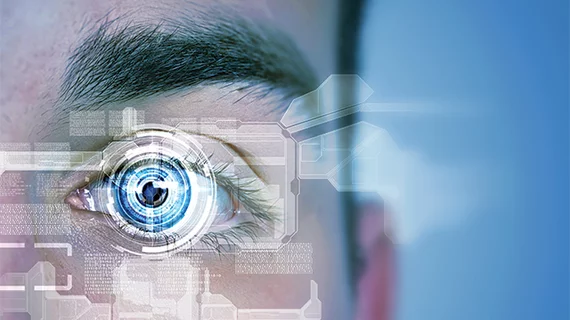Seeing the future: How routine eye exams could predict heart attacks
Routine eye exams may be able to help identify patients who face a heightened risk of a myocardial infarction (MI), according to new findings presented at the 2022 European Human Genetics Conference in Vienna.
The study’s authors explored data from the UK Biobank database, focusing on “variations in the vasculature of the retina.” A lower fractal dimension, the team found, may be associated with a higher risk of coronary artery disease (CAD) or even an MI. In addition, they found evidence that a patient’s genetics may also play a key role when tracking the relationship between fractal dimension and CAD/MI risk.
The researchers noted that their findings were even more convincing than they originally anticipated. They also shared one of the keys to their success.
“There have been multiple attempts to improve CAD and MI risk predictive models by accounting for retinal vascular traits, but these showed no significant improvement when compared with established model,” Ana Villaplana-Velasco, a PhD student with the University of Edinburgh who participated in the study, said in a statement. “In our case, we found that the clinical MI definition—the diagnostic codes that describe myocardial infarction events in medical records—is central to the successful development of predictive models, underpinning the need for developing robust disease definitions in large studies such as UK Biobank. Once we validated our MI definition, we found that our model worked extremely well.”
Looking ahead, Villaplana-Velasco and colleagues think retinal exams for any patients 50 years old or older could be play a key role in patient care.
”This would enable doctors to suggest behaviors that could reduce risk, such as giving up smoking and maintaining normal cholesterol and blood pressure,” Villaplana-Velasco said. “Our work once more shows the importance of comprehensive analysis of data that is routinely collected and its value in the further development of personalized medicine.”
The European Human Genetics Conference is the annual gathering of the European Society of Human Genetics. More information is available here.
Related Acute Coronary Syndromes Content:
Risk of dementia skyrockets when patients have more than 1 cardiovascular condition
Key interventional cardiology takeaways from the SCAI 2022 conference
FDA announces Class I recall of 4,800 imaging catheters due to risk of vascular injury
Intermittent fasting helps breast cancer survivors limit their CVD risk

